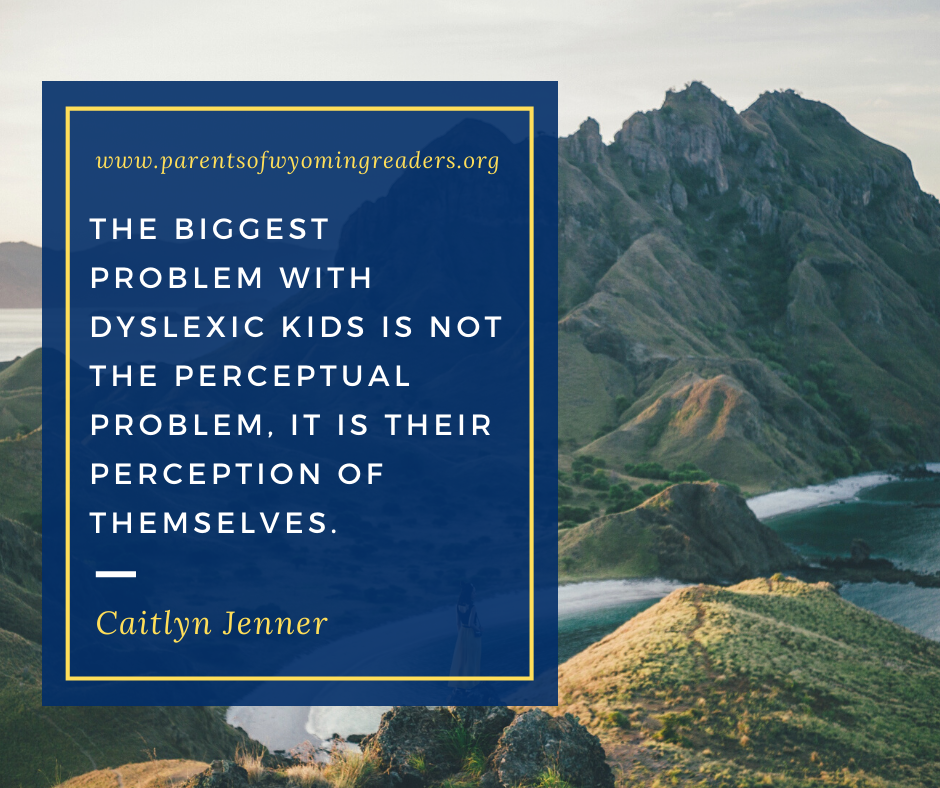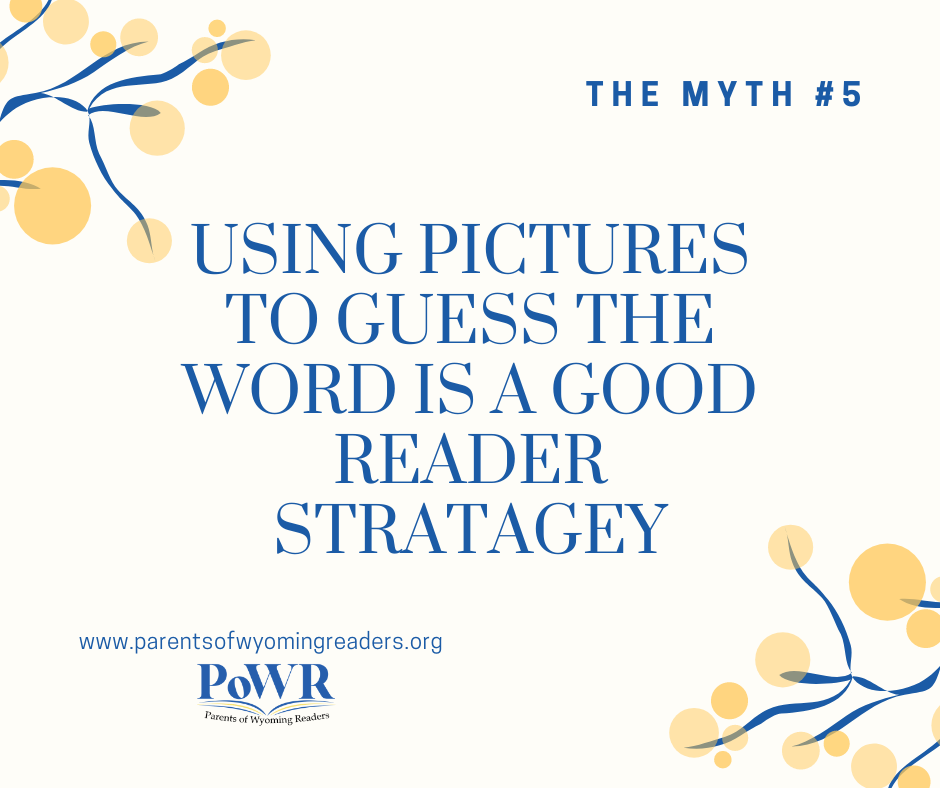
Dyslexia
Structured literacy is how we can get 95% of our kids reading to grade level or above; now it's time to talk about how this works for those most significantly impacted with reading delays. It's hard to determine exactly how many people are dyslexic. Some studies say 10-15% of the population and others have pointed to as many as 20%. So, 1 in 5 might be dyslexic but only about 1 in 20 of those are ever identified. Some of the discrepancies have to do with dyslexia being a scale of impairments and symptoms. It's not black and white, you don't have it or not, some can have it more severely than others. Some will use this to argue that it doesn't exist but thousands of brain scans using fMRI's comparing normally developing readers to those struggling show there is a difference in the areas of the brain that activate and the transmissions that occur among those areas. They also show that those struggling readers that were given remediation using structured literacy before being scanned again had changes in the areas of activation. While not completely normal brain scans there was significantly more activation in the areas that normal readers use. The earlier you can catch those with dyslexia the easier it is to remediate the difficulties. You can not cure dyslexia but you can get the students reading despite it.
Yesterday we posted about identifying kids early. Because an official diagnosis is something given out by psychologists and other medical professionals what 'identified' often looks like is low scores on assessments. Assessments include a Rapid Automized Name test (RAN), phonemic awareness screeners like PAST or Heggerty, and others like DIBELS, Acadience, or Fast Bridge (to name just a few). If the child scores low the terminology used is: identified as at risk for reading difficulties. This is enough to start interventions. It's also often enough for those administering the screener to know with some certainty if your child would fall on the dyslexia scale should you choose to get a formal diagnosis. An important question to answer in this process is if anyone in the child's family has struggled with reading; this includes parents, grandparents, aunts/uncles, and cousins. The other way to know if your child falls on the dyslexia spectrum is to get them intervention through a well-trained tutor. If they make gains and catch up quickly they were simply behind and needed structured literacy instruction to start within school. If they do not catch up quickly and tutoring is needed for an extended period of time they are most likely dyslexic; this is called Response to Intervention (RTI). Schools do not like to use the word dyslexia without a formal diagnosis and will refer to it as a Specific Learning Disability (SLD) in reading which is an umbrella term that covers dyslexia. Tomorrow's post is the signs it's time for these assessments.
So what does dyslexia look like? It is NOT reading and writing backward, though what causes all kids to struggle with flipping similar-looking letters does last longer for those with dyslexia. Those letters are b, d, p, q and m, w and will resolve by the end of first grade for most typically developing children. What dyslexic students more often experience is the sensation of letters and words swimming on the page or even running off the page. This is not a vision issue, but reducing the amount of text a student sees at one time by covering up some lines can relieve this sensation.
Some other clues to be aware of are listed below (this is a short list).
-Preschool: Have trouble remembering names of colors, trouble learning the alphabet song, or recognizing alphabet letters. They switch sounds in words zamboni comes out bizoni or teddy bear is beddy tear (in my house we ate soup poops for awhile aka fruit loops). Speech delays or frequent ear infections can contribute to reading difficulties as well.
-Early elementary: They seem to know a sight word like 'the' one day but not the next. They are receiving speech services that are not resolved by sometime in first grade. If they have not mastered the sounds of the alphabet. They struggle to learn right from left and/or learn to tie their shoes. They misinterpret what is said to them or rearrange the order of events in a story they are telling. Very poor, uneven handwriting and shorter stories than peers. Difficulty memorizing multiplication tables.
-Older students and adults: They can struggle with word retrieval issues either by describing the word they want instead of saying it (tip of the tongue sensations) or by using the wrong word in a sentence- saying cat when they meant car without realizing it. Trouble navigating with a map and/or cardinal directions. Loses track of time easily, often late.
What happens to the students that can't read and that no one catches? Very little that is good. The key here is the no one catches part, many people have misconceptions about dyslexia and trouble reading, including teachers. Most teacher prep courses cover it as a blip on the radar even though it's the most common cause of reading troubles that a teacher will encounter. They often don't know what to look for unless they have researched on their own let alone how to remediate it, even special education teachers. You don't know what you don't know. By the middle of kindergarten, these kids are already well aware that learning to read is not an easy task for them like it is for Johnny or Suzie. In their small world, there is no other explanation than they are stupid and something is wrong with them. By the end of kindergarten and into first grade some students will cover it by being the class clown, the talker, or the bully. But at home they get emotional, they act out, they avoid schoolwork, they start to have anxieties and some will make statements of self-harm. As they progress in school it only gets harder to keep up and harder to hide. Some will think they are lazy or slackers. Ask them to read out loud and be ready for a trip to the bathroom, nurse, or even the principal to avoid it; they live in constant fear and dread of this moment. By middle and high school these kids are running out of options fast. They turn to drugs and alcohol, they attempt suicide, they drop out of school, and/or they end up in juvenile detention. Over 60% of prison inmates and 85% of kids in the juvenile system are functionally illiterate. Are you ok with this?
To continue the discussion I will be posting a series of myths and truths about dyslexia. If you have ever heard someone use one of these myths in connection with your own child, please look closely at the truth. This first one has been said by many well-meaning teachers who don't know that it's a myth. Reading to a child or making them read more at home when they are struggling does not actually teach them to read. Reading to your child is very beneficial but it is no guarantee they will learn to read. The whole point of this page and our website is to start educating as many parents and teachers as we can. It is why I love this Maya Angelou quote "Do the best you can until you know better. Then when you know better, do better."
Screening children's phonemic awareness abilities as they enter kindergarten is the most reliable way to predict future reading outcomes. You can actually see, even in Pre-K, the students that need to be watched closely in kindergarten. By waiting until third grade we are only making the struggle for the student harder. Research has shown the window of making faster gains with remediation closes at around age 9. These students can still be taught to read but it's a longer, harder road.
As already discussed dyslexia goes well beyond flipping letters and is not reading or writing backward. To learn to read all brains rewire an area referred to as the letterbox. This is an area originally used for facial recognition so it likes symmetry. Consider when you learn what a chair is. It doesn't matter if you see it upside down, from the side, or on its side you know it's a chair. Now, look at b, d. p, and q then m and w. In the alphabet, it does matter. These letter switches are common in all children as they learn but by the end of first grade, the only ones still struggling with these reversals are likely dyslexic. Their pathways are already interrupted so it takes longer for them to learn the letters and sounds to mastery which is what corrects the reversals.
Unless you were in all high-level English classes, there's a good chance that you knew at least one kid, probably more, that was a slacker. They never read the assignments, goofed off in class, and appeared to not care in general about their education. What if they did those things because they couldn't read? Dyslexic students learn at an early age how to avoid the hard stuff because for them it's not just hard, but impossible. Imagine what a torture chamber the classroom would feel like if every day you walked into a room and were expected to read a foreign language without being taught. Maybe you can even understand and speak the language but no one bothered to teach you the alphabet in a way you understand. Then you were asked to read a paragraph out loud. Everyone else received the same instruction as you, but they all figured out how to read the new alphabet. This scenario plays out with an emergency trip to the bathroom, the school nurse, saying something inappropriate to the teacher and ending up in the principal's office, or complete humiliation in front of your peers and teacher. Even getting into trouble seems like a better option than letting the whole class know you are stupid. You must be stupid if everyone else can do it. How long before you give up completely and find a way to numb the anxiety and demoralizing embarrassment through drugs, alcohol, dropping out, or even suicide? Let's catch these kids and give them a chance at a better life.
In the 1970s Ken Goodman published his THEORY that reading was too hard to be an exact science. Kids learned just as well by guessing based on the context of what was already read and the pictures on the page. He also goes on to say they didn't even have to get the right word, it just has to be close. Saying "pony" for "horse" is completely acceptable. He called it three cueing; when there was some push back in the early 2000s based on the National Reading Panel results the theory was re-branded as Balanced Literacy and a phonics patch was added. But the premise was the same and it's WRONG! If your kids come home with bookmarks showing strategies of Lips Fish, Eagle Eye, Skippy Frog, and their friends your child might be in trouble. Only about 30% of kids can learn to read this way. Bypassing the letters and their sounds to look at the picture stops the process of orthographic mapping. That mapping process is how adults can read a word in a split second with no effort. It has nothing to do with guessing.
Mr. Goodman, from yesterday's post, made his theory sound so easy and attractive that no one cared that any research to back it was flawed. The divide between science/research and the field of education is wide. It takes years for the research to be boiled down to a place where educators can understand it and then years more before it influences what actually happens in the classroom. All the while we have more and more children slip through the cracks in our system. We need to educate teachers, parents, universities, and legislators until enough people in power will make the changes our kids need to learn to read.
There is so much attention on learning loss due to Covid right now. So many educators and parents are panicked about what to do. THIS IS NOT NEW, ONLY NEWLY REALIZED. I'm going to take a moment to welcome you all to the dyslexic mom club! These are the concerns and panic we have had for as long as we've known our children are dyslexic. Many of us in our research found the national reading scores and were further panicked by the thought of how many non-dyslexics were also being left behind in the classroom. If your child is falling behind fast they were probably already behind but there was no microscope to see it. This page is for the parents of any struggling reader and concerned community member.
There is no reason to wait if you suspect your child has trouble reading. Delayed intervention only means it takes longer to get them on the right track. The intervention will do no harm if they are late bloomers. But, if they aren't, the harm of waiting is great.
A great tag line from an American Federation of Teachers article by Joseph K. Torgesen on Reading Rockets @readingrocketsorg states “A late bloomer is rare; skill deficits are almost always what prevent children from blooming as readers.”
The people who are paying attention are watching the next civil rights movement emerge. The number of people sick to their stomachs watching schools, teacher's prep, and publishers fail our kids is growing and getting louder. We can do better. We HAVE to do better.



















